
The Apple Computer 1 (Apple-1), later known predominantly as the Apple I, is an 8-bit motherboard-only personal computer designed by Steve Wozniak and released by the Apple Computer Company in 1976. The company was initially formed to sell the Apple I – its first product – and would later become the world's largest technology company. The idea of starting a company and selling the computer came from Wozniak's friend and Apple co-founder Steve Jobs. One of the main innovations of the Apple I was that it included video display terminal circuitry and a keyboard interface on a single board, allowing it to connect to a low-cost composite video monitor instead of an expensive computer terminal, compared to most existing personal computers at the time such as the Altair 8800 and other S-100 bus based machines.

The Homebrew Computer Club was an early computer hobbyist group in Menlo Park, California, which met from March 1975 to December 1986. The club had an influential role in the development of the microcomputer revolution and the rise of that aspect of the Silicon Valley information technology industrial complex.
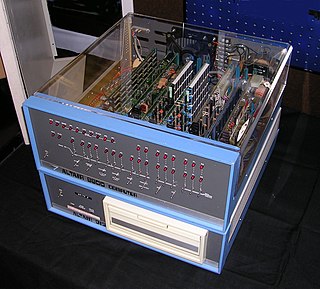
The Altair 8800 is a microcomputer designed in 1974 by MITS and based on the Intel 8080 CPU. Interest grew quickly after it was featured on the cover of the January 1975 issue of Popular Electronics and was sold by mail order through advertisements there, in Radio-Electronics, and in other hobbyist magazines. According to Harry Garland, the Altair 8800 was the product that catalyzed the microcomputer revolution of the 1970s. It was the first commercially successful personal computer. The computer bus designed for the Altair was to become a de facto standard in the form of the S-100 bus, and the first programming language for the machine was Microsoft's founding product, Altair BASIC.

Ziff Davis, Inc. is an American digital media and internet company. Founded in 1927 by William Bernard Ziff Sr. and Bernard George Davis, the company primarily owns technology- and health-oriented media websites, online shopping-related services, internet connectivity services, gaming and entertainment brands, and cybersecurity and martech tools. Previously, the company was predominantly a publisher of hobbyist magazines.
PC World is a global computer magazine published monthly by IDG. Since 2013, it has been an online-only publication.
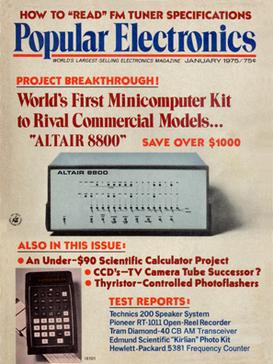
Popular Electronics was an American magazine published by John August Media, LLC, and hosted at TechnicaCuriosa.com. The magazine was started by Ziff-Davis Publishing Company in October 1954 for electronics hobbyists and experimenters. It soon became the "World's Largest-Selling Electronics Magazine". In April 1957, Ziff-Davis reported an average net paid circulation of 240,151 copies. Popular Electronics was published until October 1982 when, in November 1982, Ziff-Davis launched a successor magazine, Computers & Electronics. During its last year of publication by Ziff-Davis, Popular Electronics reported an average monthly circulation of 409,344 copies. The title was sold to Gernsback Publications, and their Hands-On Electronics magazine was renamed to Popular Electronics in February 1989, and published until December 1999. The Popular Electronics trademark was then acquired by John August Media, who revived the magazine, the digital edition of which is hosted at TechnicaCuriosa.com, along with sister titles, Mechanix Illustrated and Popular Astronomy.

PC Magazine is an American computer magazine published by Ziff Davis. A print edition was published from 1982 to January 2009. Publication of online editions started in late 1994 and continues as of 2024.
MacUser was a monthly computer magazine published by Dennis Publishing Ltd. and licensed by Felden in the UK. It ceased publication in 2015.
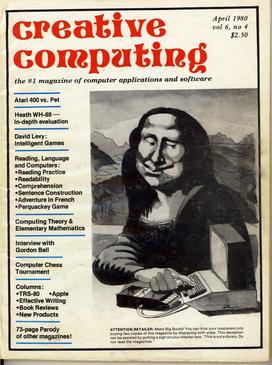
Creative Computing was one of the earliest magazines covering the microcomputer revolution. Published from October 1974 until December 1985, the magazine covered the spectrum of hobbyist/home/personal computing in a more accessible format than the rather technically oriented Byte.
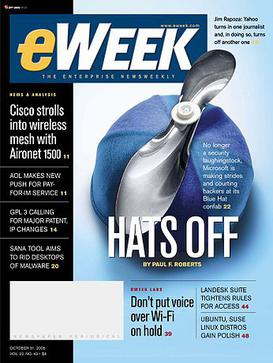
eWeek, formerly PCWeek, is a technology and business magazine. Previously owned by QuinStreet; Nashville, Tennessee marketing company TechnologyAdvice acquired eWeek in 2020.

Paul Terrell is an American businessman. In December 1975, he founded Byte Shop, the first personal computer retailer shop. He helped popularize personal computing to the hobbyist and home computing markets, and was the first retailer to sell an Apple Computer, the Apple I.

PC/Computing was a monthly Ziff Davis publication that for most of its run focused on publishing reviews of IBM-compatible hardware and software and tips and reference information for users of such software and hardware.

Processor Technology Corporation was a personal computer company founded in April 1975, by Gary Ingram and Bob Marsh in Berkeley, California. Their first product was a 4K byte RAM board that was compatible with the MITS Altair 8800 computer but more reliable than the MITS board. This was followed by a series of memory and I/O boards including a video display module.
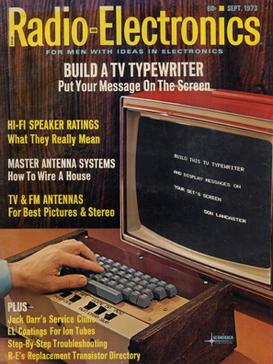
The TV Typewriter is a video terminal that could display two pages of 16 lines of 32 upper case characters on a standard television set. The design, by Don Lancaster, appeared on the cover of Radio-Electronics magazine in September 1973.

Computer Shopper was a monthly consumer computer magazine published by SX2 Media Labs. The magazine ceased print publication in April 2009. The website was closed and redirected to the PCMag website in late May 2018.

William Bernard "Bill" Ziff Jr. was an American publishing executive. His father, William Bernard Ziff Sr., was the co-founder of Ziff Davis Inc. and when the elder Ziff died in 1953, Ziff took over the management of the company. After buying out partner Bernard G. Davis, he led Ziff Davis to become the most successful publisher of technology magazines in the 1970s and 1980s.
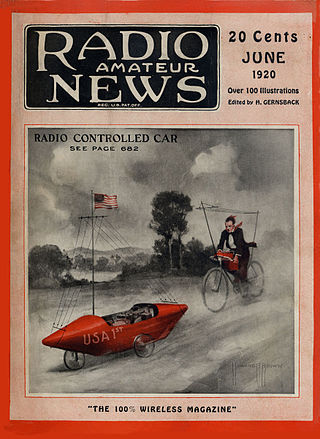
Radio News was an American monthly technology magazine published from 1919 to 1971. The magazine was started by Hugo Gernsback as a magazine for amateur radio enthusiasts, but it evolved to cover all the technical aspects to radio and electronics. In 1929, a bankruptcy forced the sale of Gernsback's publishing company to B. A. Mackinnon. In 1938, Ziff-Davis Publishing acquired the magazines.
Cromemco was a Mountain View, California microcomputer company known for its high-end Z80-based S-100 bus computers and peripherals in the early days of the personal computer revolution.

Frederic Emery Davis, known as Fred Davis, is a veteran US technology writer and publisher who served as editor of A+'' magazine, MacUser, PC Magazine and PC Week; personal computer pioneer; technologist; and entrepreneur involved in the startups of Wired, CNET, Ask Jeeves, Lumeria, Jaduka, and Grabbit.

The Cromemco Cyclops, introduced in 1975 by Cromemco, was the first commercial all-digital camera using a digital metal–oxide–semiconductor (MOS) image sensor. It was also the first digital camera to be interfaced to a microcomputer. The digital sensor for the camera was a modified 1 kb dynamic RAM (DRAM) memory chip that offered a resolution of 32 × 32 pixels (0.001 megapixels).
















